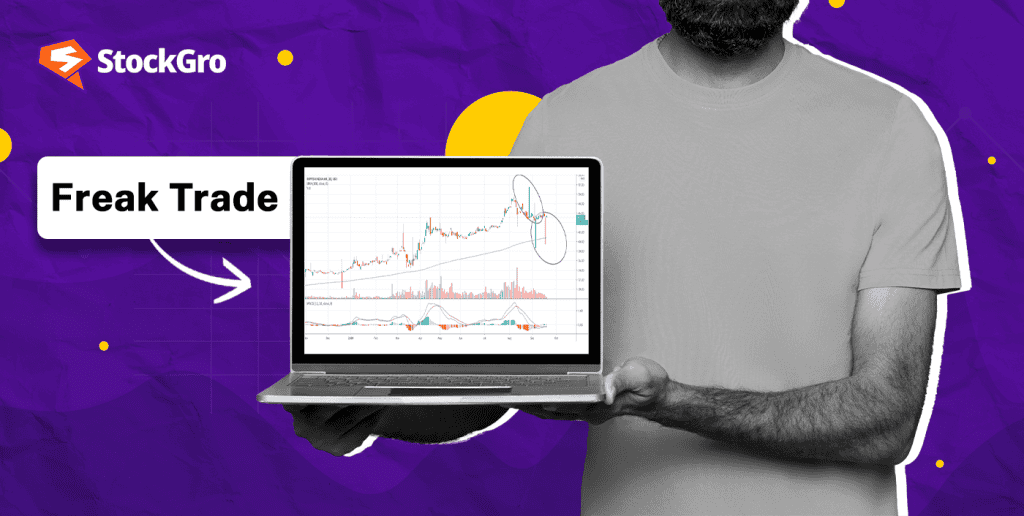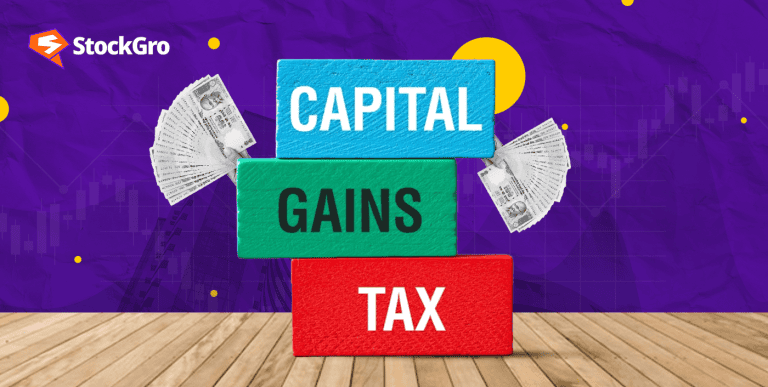
Have you ever seen the price of a stock abruptly rise or fall for no obvious cause? This might be the outcome of a “freak trade,” an unexpected and inadvertent market event capable of surprising investors. Understanding freak transactions is absolutely essential in today’s fast-paced stock market, particularly if trading is progressively driven by algorithms.
This article seeks to define what freak trades are, how they occur, and how they affect investors so that you can better negotiate unanticipated market fluctuations and safeguard your assets.
What is a freak trade?
In the stock market, a freak trade is an odd and unanticipated trade that results in a notable and instantaneous price change for a company or index. Usually resulting from mistakes, either technical or human, these trades can cause big swings in stock values for a short period of time.
Usually resulting from either incorrect entries or automated trading errors, freak trades occur when the buy and sell orders contradict one another. An erroneous entry of a sizable trade order, for instance, can cause the stock price to swing sharply. Such anomalies can throw off the market and set off stop-loss orders, which would cause investor fear.
Freak trade’s meaning is found in its capacity to produce transient market abnormalities that might significantly influence the portfolios of investors. Usually corrected swiftly as the market recovers to its usual trading patterns, these trades have a significant temporary impact, especially for those having stop-loss orders put at levels affected by this trade.
Freak trades can happen due to:
- Human error: Mistaken trade quantities or prices, like entering 10,000 shares instead of 1,000.
- Algorithmic trading errors: Algorithms misinterpreting data and placing large, erroneous orders.
- Technical glitches: System faults, network issues, or data feed errors causing unintended price swings or trades.
- Market illiquidity: In low-liquidity markets, even small trades can cause significant price changes.
Also read: Type 1 and type 2 errors: How to avoid them when investing in stocks
Characteristics of freak trades
- Sudden price spikes or drops: The fluctuation in stock prices that marks freak trades is sudden and severe. Usually, without any noteworthy market events to support the adjustment, these trades lead a stock to soar or crash.
- Temporary in nature: Freak trades usually bring short-lived price oddities. Usually, in seconds or minutes, market systems quickly adjust these price swings.
- Out of sync with broader market trends: Freak trades happen apart from the general trend of the market. Although the larger market is still steady, these trades could cause a single stock to have an enormous price swing.
Example of a freak trade
Freak trade due to erroneous order input
A classic example of a freak trade occurred on September 8, 2023, when a sudden and dramatic spike in the Sensex Call Option of 67,000 strike price sent shockwaves through Dalal Street.
In a matter of seconds, the premium for this option skyrocketed from ₹4.30 to ₹209.25, an increase of nearly 5,000%. The spike, although temporary, resulted in significant financial consequences for many traders.
This unexpected surge, suspected to be the result of an erroneous order input by a trader, led to a freak trade scenario where the market price briefly deviated drastically from its normal range.
Despite normalising shortly after, the sudden price movement caused heavy losses for some traders, while others netted substantial profits due to this price anomaly. For instance, one trader mentioned that he went from a loss of ₹60,000 to a profit of ₹3.5 lakh within seconds.
SEBI launched an inquiry into the incident, suspecting the use of market orders in illiquid options. This event highlighted the risks of algorithmic trading and market orders in low-liquidity instruments, raising concerns about brokers’ roles in preventing errors. It served as a cautionary tale for traders about market unpredictability, especially with automated and high-speed trades.
Freak trade due to technical glitch
Citigroup was fined £61.6 million by UK regulators due to a technical glitch in May 2022. A trader mistakenly created an equity basket valued at $444 billion instead of $58 million, causing a flash crash in European stocks and selling $1.4 billion worth of equities across various exchanges. The incident exposed significant deficiencies in Citigroup’s trading controls.
On the National Stock Exchange (NSE), a freak trade by Emkay Global Financial Services caused a 900-point plunge in the Nifty index in January 2013. A mistaken sell order worth ₹650 crore led to over ₹3 lakh crore in market value being erased within minutes.
Also read: Users Struggle to Trade as HDFC Securities Faces Technical Glitch
Freak trade impact on investors
Stop-loss market orders can be very much influenced by freak trades. Aiming to minimise an investor’s possible loss, a stop-loss order is an automatic directive to purchase or sell a stock once it reaches a specific price. On a freak trade, however, abrupt and unusual price movements can trigger early activation of these orders.
A freak trade can strike the stop-loss levels set by investors with quick price swings or declines. This might cause buy orders at much higher prices than expected or sell orders carried out at considerably lower prices, therefore producing unexpected losses or missed profits.
If an investor has a stop-loss set at ₹500, for instance, a freak trade could momentarily lower the stock price to ₹450, therefore triggering the stop-loss and running the sell order. The trade would have already been done, resulting in a loss for the investor even if the stock price had quickly recovered.
You may also like: Stop-Loss order – Are you using it?
How to safeguard your investments?
- Use limit orders: Control your trade prices to avoid extremes.
- Keep an eye on your trades: Monitor investments and market conditions regularly. This enables you to take quick action if a freak trade impacts your position.
- Diversify your portfolio: Spread investments across various assets to minimise the effect of any single freak trade.
- Leverage advanced trading features: Many trading platforms provide tools that help in managing risks, such as setting alerts, automating trades, and monitoring market trends.
Bottomline
Though rare, freak trades can have a big effect on the stock market and investor portfolios. Particularly for those with automatic trading systems in place, these unanticipated price swings—caused by human mistakes, technical errors, or algorithmic malfunction—can generate panic and unplanned losses.
Although most freak transactions are corrected fast, others find significant financial repercussions and disturbance in trading from their volatility. Maintaining knowledge and implementing preventative actions will assist guard against the erratic character of freak trades in today’s fast-paced markets as dependence on algorithmic trading and automated systems rises.
Want to master stock trading? Learn from SEBI-registered experts, access real-time market insights, and practice risk-free with virtual trading. Start learning investment strategies app today!FAQs
What is a fat finger trade or a freak trade?
An inadvertent trade brought on by a human mistake—such as pressing the incorrect key when entering data—is a fat finger trade. This error can have a major effect on the market, for example, ordering a lot more than needed. A trader might unintentionally enter an order to sell 5,000,000 shares rather than 5,000,000.
What is fear in trading?
In trading, a normal human feeling brought on by the unpredictability and possibility of financial loss in the markets is fear. It could show up as avoidance of transactions entirely, early closing of successful deals, or uncertainty about entering trades. This worry could distort judgement and result in bad decisions and lost possibilities. Maintaining a focused and successful trading plan depends on control of fear.
How to avoid freak trade?
Using limit orders instead of market orders helps you to manage the execution price and prevent freak transactions. Establish suitable stop-loss thresholds to avoid triggering resulting from transient price fluctuations. To spot odd activity right away, routinely check trade and market conditions. These techniques serve to reduce the hazards related to sudden and notable market price fluctuations.
What is panic trading?
Often brought on by negative news or market occurrences, panic trading is the fast sale of assets driven by fear and uncertainty. Sharp falls in asset values and further market instability follow from this widespread selling. Driven by emotions instead of logical analysis, panic trading can cause major financial losses and disturb market stability. Control of emotions and a strong plan will help to lessen its influence.
What is GREY trading?
Grey trading is the purchasing and selling of financial instruments under unofficial or illegal means prior to official listing on an exchange. Operating in over-the-counter (OTC) marketplaces, this kind of trading lets investors estimate demand for fresh assets. Grey trading is dangerous even if it is not illegal because of its unofficial character and the possibility of unchecked operations.

